You spent the summer out in the sun, taking in the sights of a long mountain hike, diving into refreshing lake waters, and grilling burgers in the backyard while the kids played in the grass. There was one family member who was by your side through it all, and as the warm summer air has cooled into frosty winter nights, your family pup may be longing for memories of a summer past. Keep your dog’s winter blues at bay with tips and tricks for a happy winter season that’s still packed with adventure, play, and lots of snuggles.
Keeping your pup warm in winter
You know how the saying goes: If you’re cold, they’re cold. Just because your dog’s delicate skin is covered in fluffy fur doesn’t mean it always keeps them toasty. Your pup’s breed, size, and even age will affect their ability to regulate their own temperature. While they may be spending most of their time indoors, some pups may struggle to warm back up after running outside for a potty break. You wouldn’t go outside without a coat on, so consider wrapping up your pup in a light sweater or coat whenever they go outside. They’ll look absolutely adorable as they head out for a potty break, and with the added comfort, they may choose to stay outside a bit longer to catch a snowflake or two!
When choosing a coat or sweater, pay attention to how your dog reacts to the fit and material. You want to make sure your pup is as comfortable as possible, and some materials may scratch or rub their skin in a way that can be painful. Make sure they’re able to move around without restraint and you’ll soon have a pup that doesn’t mind the snow!
While your pup is prancing through the snow, toss their bedding into the dryer to get toasty warm. When their eager face is pressed up against the back door, let them back inside and use the warm blankets to help raise their body temperature back to normal. They’ll love the extra attention and will soon drift off into a deep sleep while snuggled in a bundle of warmth and love. Make sure to wash their bedding often to provide a hygienic space for them to unwind.
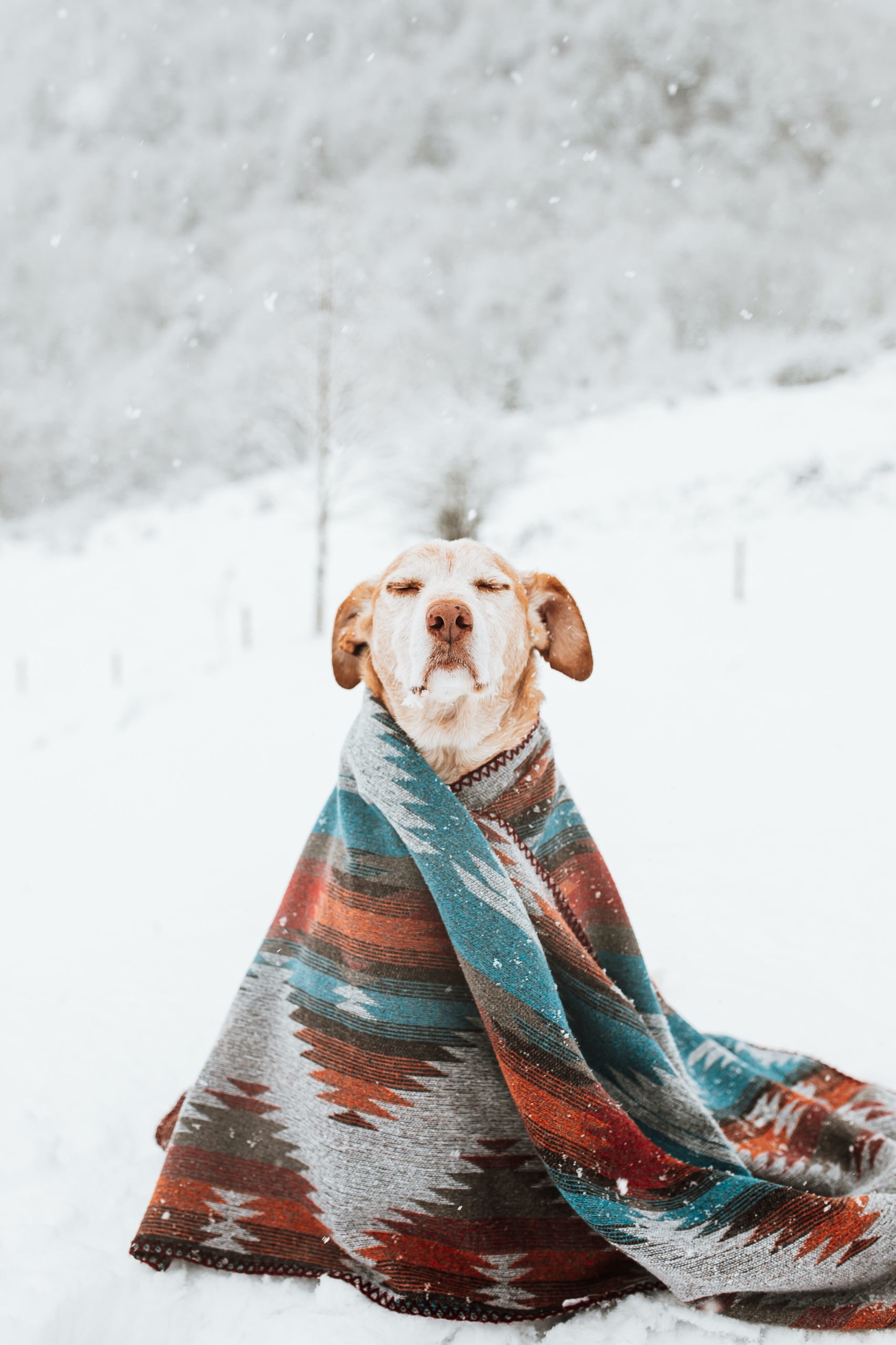
How to safely walk/exercise your dog in winter
Just as the summer sun can raise the temperature of asphalt, leaving burns on the bottom of your pup’s feet, the cold weather can make exercising outside dangerous for your pup. But this isn’t a time to give up on that exercise routine! In fact, many pups can experience cabin fever if they’re stuck inside too long, so getting your dog outdoors in the winter is crucial for their mental health.
While the ground may not be blistering hot anymore, the cold can leave frostbitten blisters on the bottom of your pup’s feet. While most dogs will be okay prancing through the snow while barefoot, there may be sharp objects hidden underneath the fluff that they may not see. Avoid an unwanted vet visit by slipping on some booties before they head out the door. This will provide a barrier between their paws and the cold, giving them the freedom to stay outside longer and run through the snow without accidently injuring themselves.
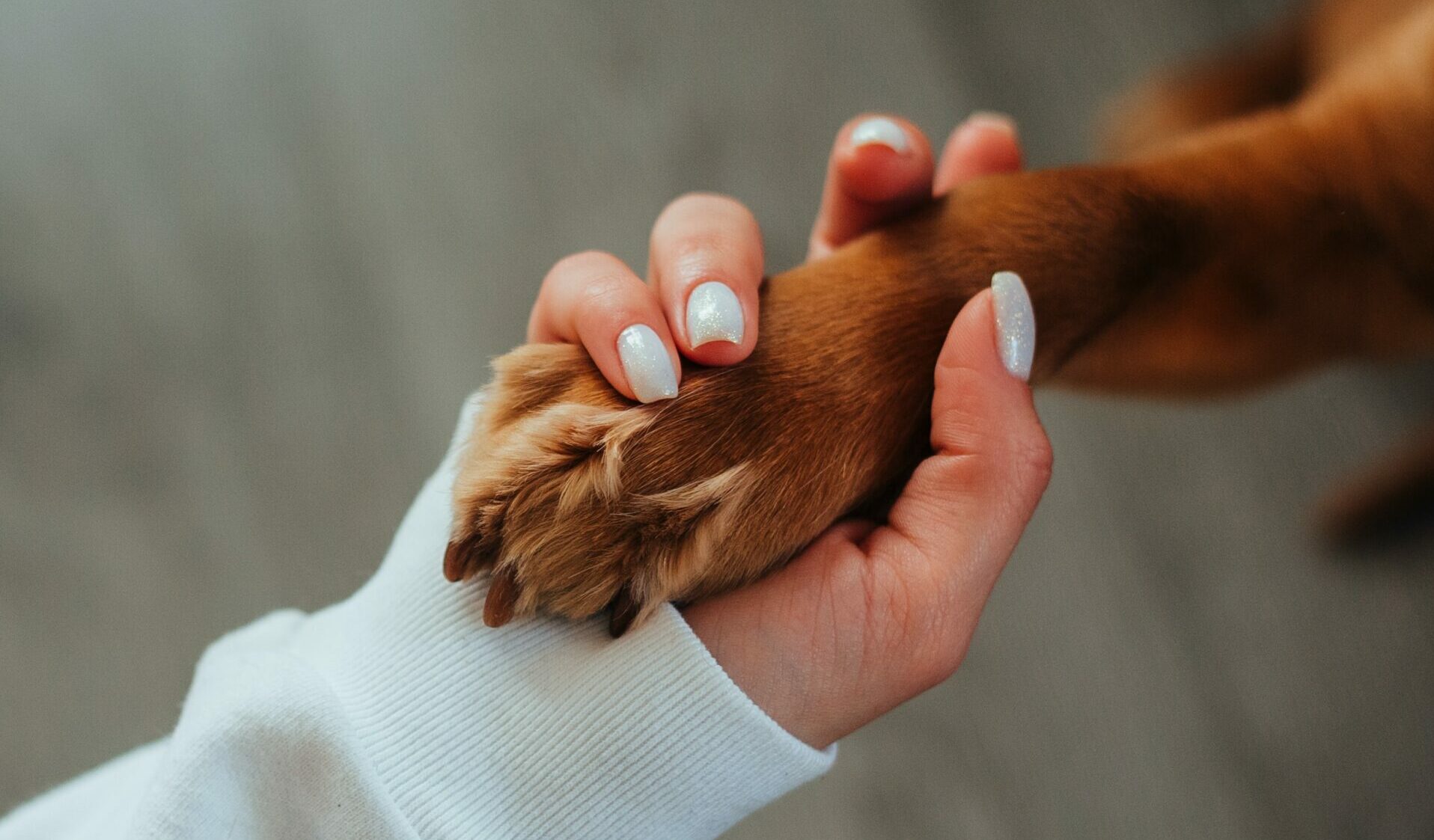
How to protect your dog’s paws in the winter
Have you ever come inside after a long snow day just to find that your hands and feet have remained icicles? Your pup may experience something similar after prancing in the snow and might need help warming up their paws. After they come inside, take the time to thoroughly dry their feet of any remaining snow or ice that may have stuck to their paws. Wrap them up in a blanket and feel their paws often to make sure they’re warming back up.
Just like how people often get cracked lips or skin from the dry winter air, your pup may develop dry skin on their paws. If you’ve noticed any flakiness or cracks, make an essential oil-infused paw balm for a natural fix. Massage the soothing mixture into your pet’s dry paws for extra pampering and to soothe dry skin.
Disclaimer: Talk with your dog’s veterinarian before using essential oils.
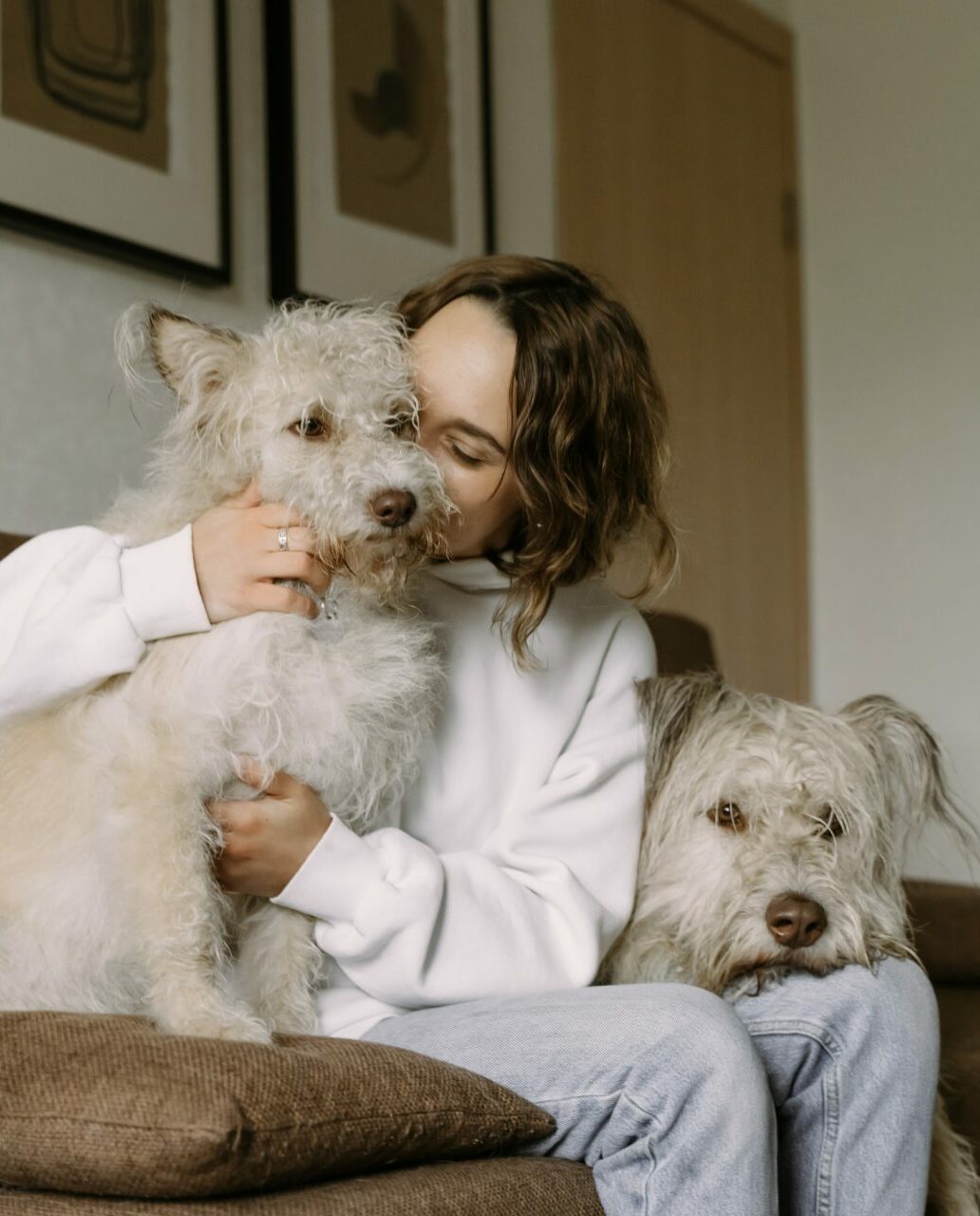
Do dogs get dry skin in the winter?
Skin is skin, and just how you may need to add an extra layer of lotion in the winter, your dog may need some additional skin care to keep them happy and hydrated. There are plenty of dog-safe lotions and skin products to choose from, but it’s important to check the labels for harmful toxins and chemicals that may technically be considered “safe,” but have unnatural elements that just aren’t the best for your pup. Look for products that are free of harsh chemicals and will leave your dog’s skin feeling smooth and natural.
How do you catch and treat dry skin?
The signs aren’t anything special, but it’s important to pay attention to your dog’s skin during the winter months to catch any itching, flaking, cracking, hair loss, or other skin irritations. If you dog is experiencing any of these symptoms, try some of the following methods for hydrating dry skin naturally:
Paw massage: Keep crusty paws at bay with Animal Scents™ Ointment! This hydrating balm is made with naturally derived ingredients, leaving your pup’s paws feeling silky smooth no matter the weather. But don’t stop at the paws! This ointment can be applied anywhere on your pup that’s in need of a little hydration.
Soothing bath: Add 5–6 drops of Animal Scents Mendwell™ into your pup’s bathwater before letting them slip in. As they soak in the warm water, their skin will absorb this gentle moisturizing blend, creating a silky smooth finish on their skin.
If you’ve tried a few natural options and your pup is still suffering from dry skin, speak with your vet to rule out any unknown skin conditions that may be causing additional difficulties.
What to do if your dog gets dry skin in the winter
Change grooming habits for winter. It’s easy to get dried out in the winter. Your dog’s fur contains natural oils that help keep the skin hydrated, but frequent baths can strip these oils and dry out their skin. Reduce your dog’s bathing during the winter months, and when it is time for a scrub, use Animal Scents Shampoo to clean and deeply condition your pup’s fur.
YL tip: Make sure your pup is completely dry before letting them back outside.
Help your pet stay hydrated. It’s easy to down large amounts of water when it’s hot outside! Colder weather can cause dehydration, so it’s important to keep your dog’s water bowl full and fresh. If they’re not emptying their bowl at least once a day, they might need little reminders every few hours to go take a couple gulps. A dog’s diet can also contribute to dehydration, so you can switch to wet food or soak their kibble in bone broth to help them stay hydrated while enjoying a delicious snack!
Add healthy fats and oils to their diet. As mentioned, your dog naturally produces oils that hydrate the skin, but you can help them out by adding additional oils to their diet. Swirl a few drops of wild-caught salmon oil or flaxseed oil into your dog’s food for a delicious boost they’ll gobble right up! Speak with your vet to nail down oil quantities and frequency of use.
How to exercise a dog in the winter
Just because those rolling green hills are now covered with two feet of fluffy snow doesn’t mean all your exercising needs to stay indoors! Throw on some booties and a coat and your pup will be fully prepared to burn off some steam while prancing in the snow.
Just like with us, it’s important to start any exercise session with a gentle warm up to get the blood pumping, especially in the cold season when muscles tend to tense up. To avoid injury, start with at least five minutes of loose-leash walking followed up with a game of fetch or your dog’s favorite high-impact game.
If you live in an area that is difficult to explore during the winter, creating daily enrichment activities for your pup will help combat boredom and cabin fever. Dogs are easy to entertain, and mental stimulation can often have the same effects as exercise, helping to manage anxiety and indoor stress. There are plenty of toys that are designed specifically for mental stimulation, but even a simple game of hide and seek can often do the trick! Just think, if you get bored of doing the same thing every single day, so does your pup. Keep things exciting and new and your doggo will get through the cold winter months with a smile on their cute little face.
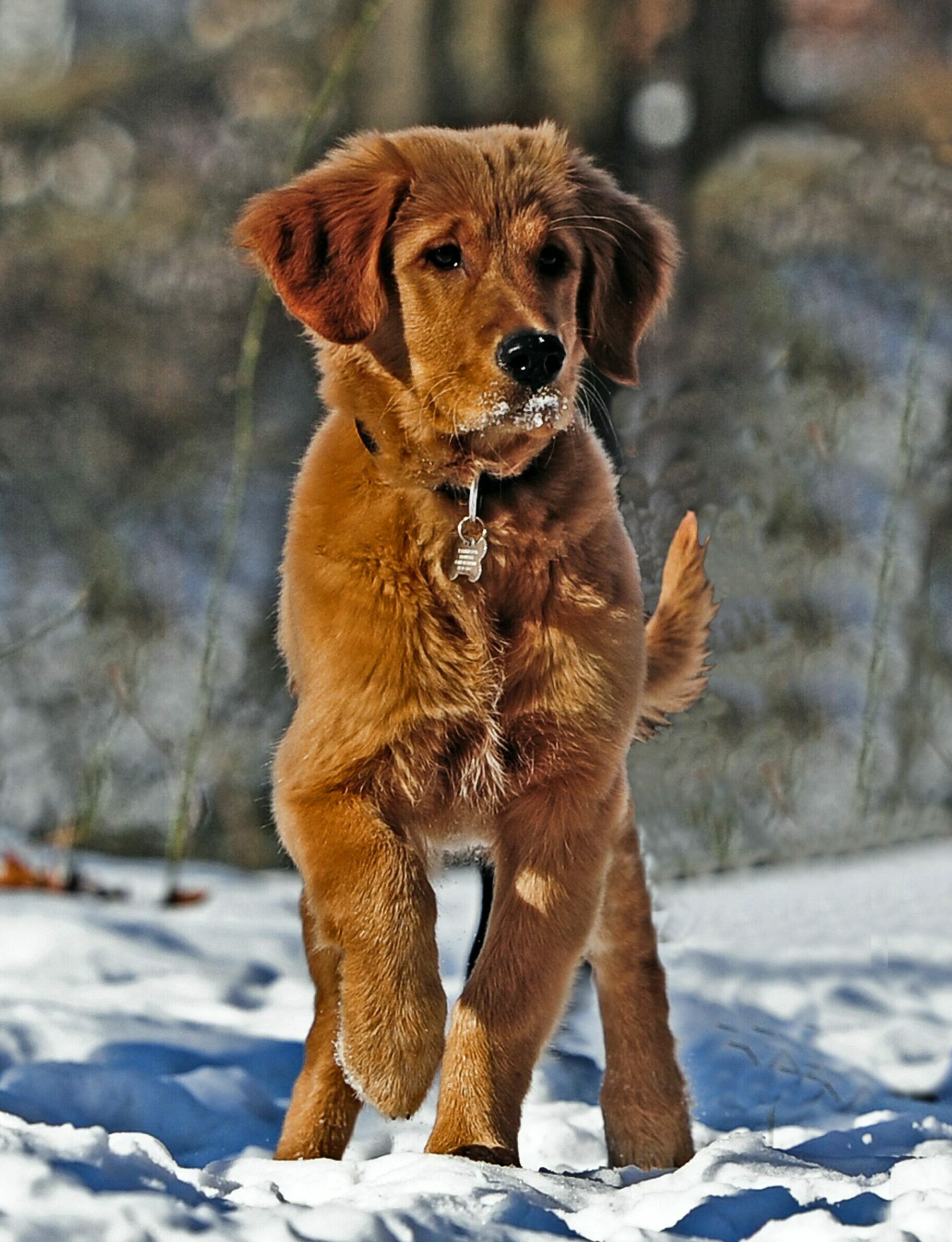
Winter is a time to snuggle in and rest up, and while most of your pup’s favorite outdoor activities will be on pause until springtime rolls around, you can still help your dog stay happy, healthy, and fulfilled during the colder months!
Looking for a natural way to combat dog smell? Try these 5 steps to battle funky scents or give our DIY pet stain and odor remover a try.

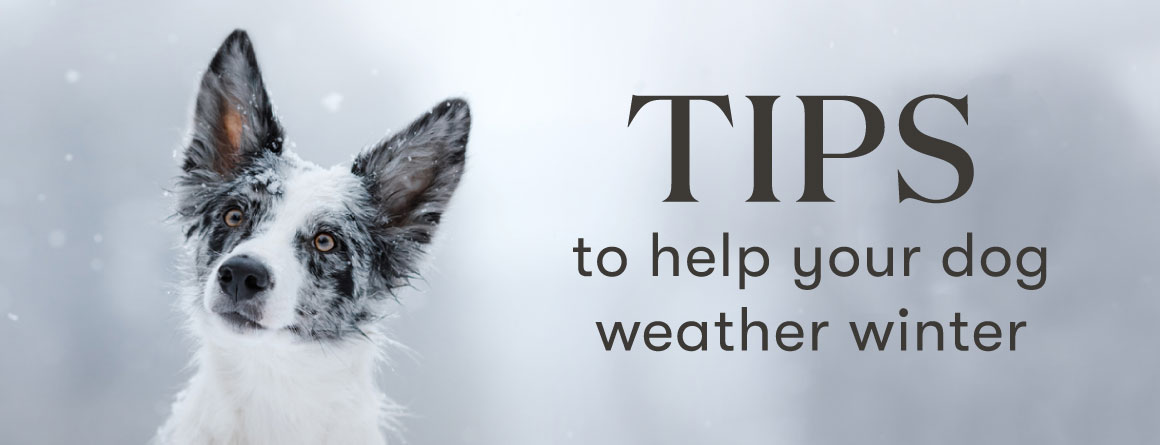


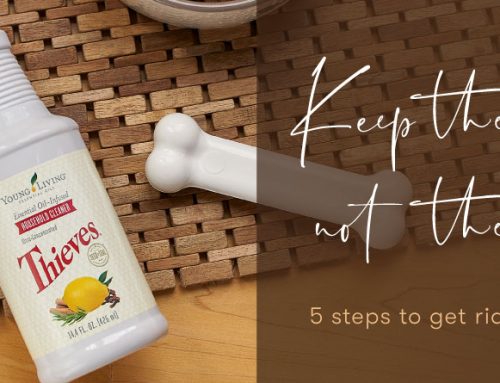
Leave A Comment